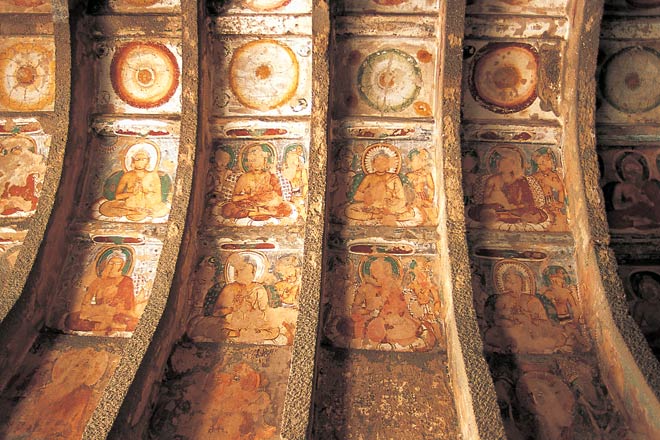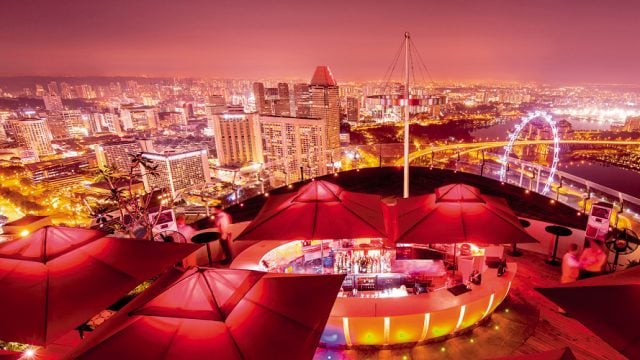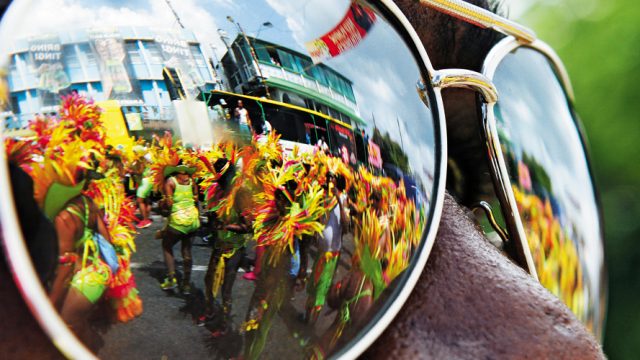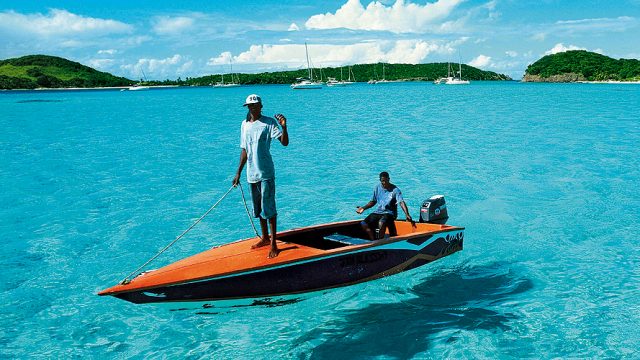Those of you who are of a certain age will recall a time when Indian trains
Second class had cushioned seats but one had to sit up throughout the journey if the cabin was full. It was the worst deal of all. In third class there were wooden berths and we were packed like sardines. Once I spent the whole night sitting on my suitcase. But I was partial to third class travel for no other reason except that it was financially viable for me. With a student discount, I could travel from Delhi to Bombay for twenty rupees. By now you probably have a good idea on my age!
That was then. A few months back, I went to the other extreme for a whole new experience. I travelled like a Maharaja, pampered and fussed over, in one of the most luxurious trains in the world, the Deccan Odyssey. It was a five-star hotel in perpetual motion. The seven-night ride on wheels takes you through the major historic spots of the Deccan and sometimes beyond. It costs an arm and a leg but more on that later.
On a balmy Saturday afternoon, we were sent off in style to the sounds of drums beating and boisterous folk dancing from Mumbai’s Chhatrapati Shivaji Station. (They can call it whatever they want but this magnificent Gothic train station will always be Victoria Terminus for me!) This set the mood for the journey ahead. Almost all the passengers were foreigners, among them Canadians, Europeans, a couple from Hong Kong and a large amiable contingent from Turkey.

We were welcomed on board with refreshing mocktails as the train made its leisurely way through the city’s outer suburbs. I unpacked and took a measure of the amenities in my cabin. The beds were first rate; there was a television on the wall, a writing desk as well as a cell phone to call for service. There was wi-fi. The shower and toilet had the usual goodies you find in any decent hotel. Best of all, when you flushed the toilet your poo did not end up on the tracks below. That was a first for me on an Indian train!
On this run, the Deccan Odyssey had five passenger coaches, each with four cabins with double or twin beds. Another coach had two presidential suites for the well-heeled with drawing rooms adjacent to the sleeping area. The number of coaches are added or subtracted from week to week depending on the demand. There was a spa if you felt like a massage, a conference room and a library. The staff quarters were at the other end of the train.

After a hot shower, I changed from shorts into something less casual and headed for the bar where I ordered a stiff Scotch. This was another first for me, a bar on an Indian train! Sure, I have had drinks before on Indian trains, even with ice, but always surreptitiously and with pangs of guilt! Then I checked out the restaurant. There were two dining rooms with the kitchen in the middle, both with plush seating for two on one side of the aisle and four on the other. The waiters were attentive and smartly dressed, sometimes in kurta and Maharashtrian-style dhotis and at other more formal occasions in black sherwanis.
The menu offered a choice of Indian or European cuisine. On my first evening I opted for rack of lamb, medium rare. It was made to perfection by the London-trained chef on board, Simarpal Singh Virdi, who had earlier done a stint at Indigo, an up-scale Mumbai restaurant.
Except for a high tea at the Falaknuma Palace on our stop in Hyderabad, all our meals, breakfast, lunch and dinner, were on the train throughout the trip. There was always a choice at all meals. The more adventurous foreigners tried out the local stuff, biryani one day, perhaps Goan fish curry the next. I stuck to the non-Indian cuisine. The baked salmon took my fancy one evening and Thai green curry at lunch the following day. There was also sushi. The breakfast menus included the usual selection of breads, also idli, upma, pao bhaaji as well as eggs Benedict, sausages and omelettes.

On the first morning, when I woke up and parted the curtain, I could see that we were still shooting through the barren lands of the Deccan plateau. Javed, the valet assigned to our compartment brought me morning tea together with the printout of the e-paper edition of The Times of India that was downloaded from the internet. He was at our service throughout the day, to make the bed, change the linen daily and cater to our every whim. He would get the laundry done and arrange to have the meal brought to the cabin if, for some reason, one was not inclined to eat in the restaurant.
Our first stop was Bijapur to visit the Gol Gumbaz, literally ‘round dome’, reputed to be the world’s third largest unsupported dome. It was built in 1659. The more adventurous among us decided to climb all the way to the top. Bijapur also boasts the Malik-e-Maidan, a huge cannon over four metres long. It is 500 years old and was brought to the city as a war trophy by ten elephants and 400 oxen. In the afternoon, after lunch, most passengers rested while some Turks tried playing carom, quintessentially an Indian board game. It was not always half-day excursions. In Hampi, for instance, it was rather hectic. We returned to the train only after the magnificent 16th -century Vittala Temple was lit up after sunset for our benefit.
The Deccan Odyssey has six different itineraries depending on the date you choose to travel. I was on ‘Jewels of the Deccan’ and that suited me fine though I would have liked to see the historic and religious town of Nashik which was on the ‘Maharashtra Spendour’ or the ‘Mahrashtra Wild Trail’ excursions but not on ours.

Besides Bijapur and Hampi we stopped to see the ancient temples of Badami, the Golconda Fort in Hyderabad and the caves of Ellora and Ajanta, the last two certainly the highlight for me. I had last visited these caves almost 50 years ago as a young backpacker. The intervening years have not diminished the awe I felt once again. The Kailash temple in Ellora, dedicated to Shiva, is the world’s largest monolithic sculpture. As for Ajanta, the 2,000-year-old paintings were discovered in 1819 when a British hunting party stumbled upon them. The caves’ isolation preserved them over the centuries.
The Deccan Odyssey offers you a memorable and comfortable way of touring if you have limited time. You pack in a lot in seven days. Most of the distances are covered at night while you are sleeping.

Luxury trains like this one are relics of the past. Indian nobility once travelled in this style. Abroad, the most glamorous of them all was the legendary Orient Express that steamed out of Paris, beginning 1883, and ended up in Istanbul in Turkey. It was the setting for a number of novels, including Agatha Christie’s Murder on the Orient Express and Graham Greene’s Stamboul Train. Both were made into films. The train was discontinued in 1977. Today, there is another train bearing the same name but with a much shorter route. It has neither the aura nor the glamour of the original.
You will find a number of European countries with upscale trains that cater to tourists. The Belmond group operates seven such trains of which the Grand Hibernian in Ireland and the Northern Belle in Britain are the most popular. Deccan Odyssey’s advantage over its European counterparts is the quality of service on board. On the trip I took, there were 40 passengers with a staff of 40 to take care of our needs. It is just not economically feasible for European trains to provide such personalised service.
The train’s design is a mix of opulence and heritage. The dark blue exteriors carry gold insignias of crossed swords, a nod to Maratha warriors of the past. The train is jointly owned by the Maharashtra Government and Indian Railways but they have wisely given its management to Cox & Kings, a highly regarded travel and hospitality operator that traces its history to 1758.
The last night was the gala night with dancing to Bollywood music in the bar. Ladies in saris and men in kurtas provided as keepsakes. The Turkish ladies had a flair for Bollywood-style dancing, no doubt learnt from our films.
Information
The Train
The Deccan Odyssey is a luxury train operating on six journeys—Maharashtra Splendour, Indian Odyssey, Jewels of the Deccan, Maharashtra Wild Trail, Indian Sojourn and Hidden Treasures of Gujarat. Except Indian Odyssey all the journeys begin in Mumbai. All the journeys are for eight days and seven nights.
The train has 21 coaches, including two dining cars, Waavar and Utsav, two generator cars with luggage store, two staff cars, a spa car and a bar car.
Among the services offered on boardare wi-fi, cell phones, channel music and also a beauty saloon.
Tariff
A single occupancy cabin costs â?¹383,500. If you share the cabin it comes down to â?¹277,000. The Presidential suite costs â?¹830,000 single or double occupancy. This takes care of all the meals, bus tours, the guides and the entrance fees to the sites. Early bird offer on bookings till June 15: pay for six nights and get seven nights plus complimentary 60-minute spa therapy for a couple.
Contact
To book, call +91-9811204347. See www.deccan-odyssey-india.comfor more information.
Schedule
The Deccan Odyssey usually operates between September and May. The next train is Jewels of the Deccan, which departs on October 8. It starts from Mumbai and travels to Bijapur, Aihole, Pattadakal, Hampi, Hyderabad, Ellora Caves and Ajanta Caves before ending in Mumbai during its eight-day itinerary
Deccan Odyssey
Heritage Tour
Indian Railways





